Check out the full big wall video course, or download the e-book.
Skyhooks come in many different sizes, with each brand being shaped slightly differently. However, for most aid routes, you'll only need the three common types:
- Bat/talon (small)
- Cliffhanger (medium)
- Grappling (large)
Having two of each is recommended so that you can make consecutive moves with the same sized hook.
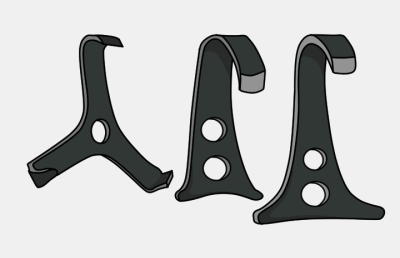
Giant Aid Climbing Hooks
On harder routes, it is worth supplementing your hook rack with some giant hooks (such as the Pika Meat Hook) and pointed hooks of various sizes to fit in drilled holes.
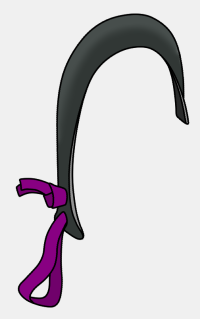
Pointed Skyhooks
To make your hook pointed, simply file the end to a blunt point at around 60 degrees.
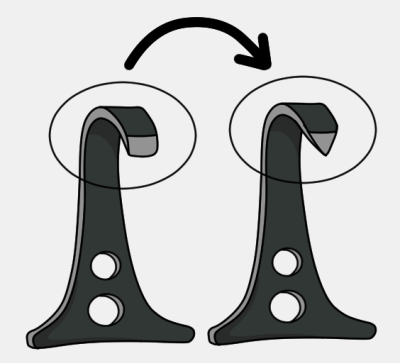
Slinging Skyhooks
Tie your hooks with a loop of cord or webbing which is stronger than the hook itself. 9/16" (14mm) webbing tied with a water knot or 6mm cord tied with a double fisherman’s bend are good choices.
Make the loop small so you get the optimum reach out of it.
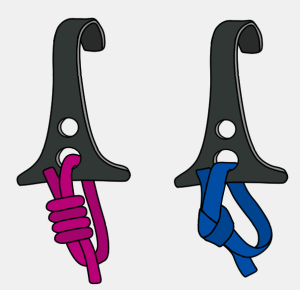
An alternative method is to tie an overhand knot in a short length of thick webbing and feed it through the hole in the back of the skyhook.
Make sure the knot is big enough so that it won't slip through the hole.
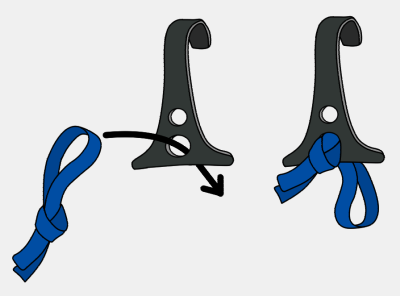
Skyhooks - The Placement
Hooks work best on flakes or incut edges of solid rock. Feel the edge of rock with your fingertips to find the sweet spot – the slightest depression makes a difference.
On popular routes, look for scratch marks on the rock to see where others have hooked before.
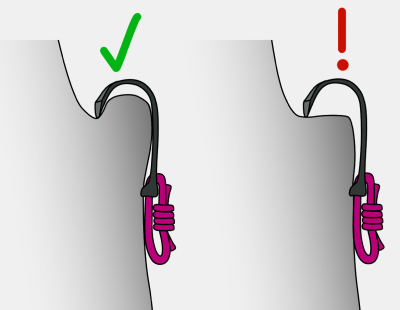
Sometimes, a very light tap with your hammer sets the hook into position nicely.
If you hit a hook too hard, it will probably bend, break the rock or spring out suddenly.
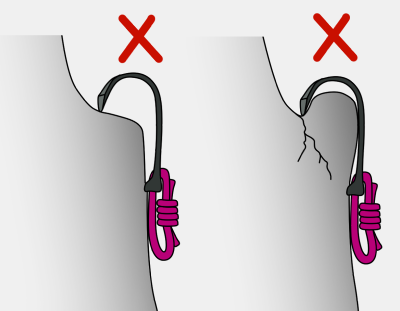
The Over-Reacher
If a flake is just out of reach, you could use the ‘over-reacher’:
1) Extend your daisy chain with a quickdraw.
2) Clip the hook to it.
3) Tape the hook to your hammer.
4) Slide the hook up the wall.
5) Once the hook bites, give it a very gentle bounce test and creep upwards.
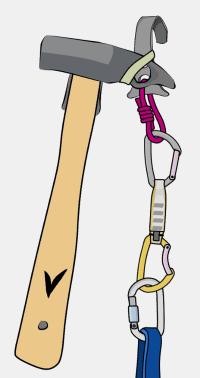
Leaving Hooks as Protection
The average skyhook has a breaking strength of around 2-3kN; the same as a tiny micro nut. This is enough to hold your bodyweight or an extremely short fall.
To make your hooks more likely to hold a fall, you can equalize them with other marginal pieces (using a sliding-X), or add a fall arrester (such as the Yates Scream-Aid), or both.
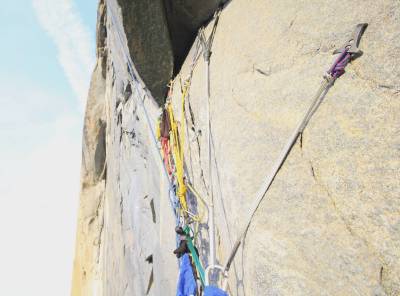
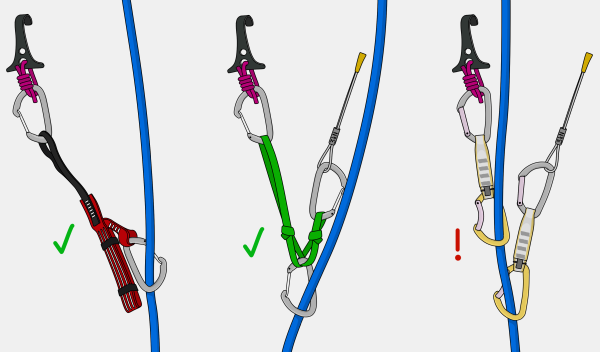
When you climb above your hook, it is fairly likely to get flicked by movements in the rope and tumble off the rock. This can be reduced by:
- Weighting the hook down with something heavy, like an enormous hex.
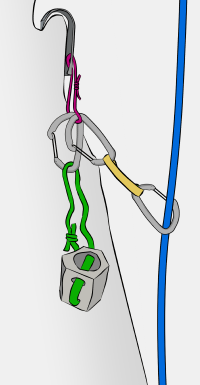
- Using standard office stationary such as duck-tape or blu-tac.
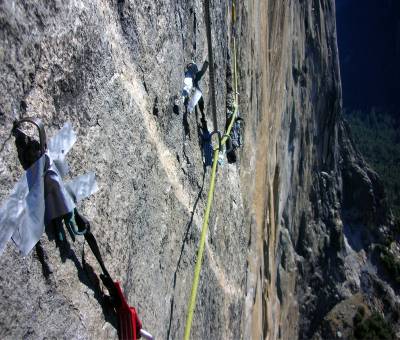
- Using an upwards-pulling piece of gear to hold the hook in place.
It may seem like a lot of trouble for a marginal piece of protection, but if it's the only thing stopping you from hitting a ledge, it'll be worth the effort, at least psychologically.
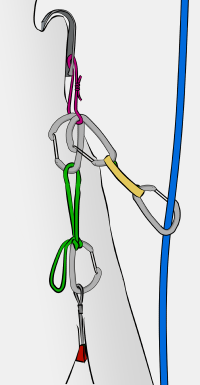
Racking Skyhooks
Rack one of each type on the same carabiner. On harder routes, it can be useful to keep a commonly used hook (usually a pointed grappling) on each aider to save time.
If you are storing a lot of hooks with the main rack, keep them in a stuff sack (Fish Beef Bags are good) to stop them tangling into everything.
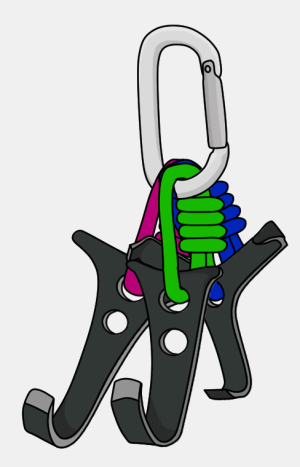
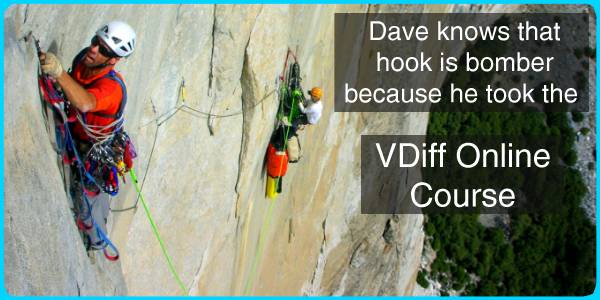





4 thoughts on “Aid Climbing Gear – Skyhooks”
Comments are closed.